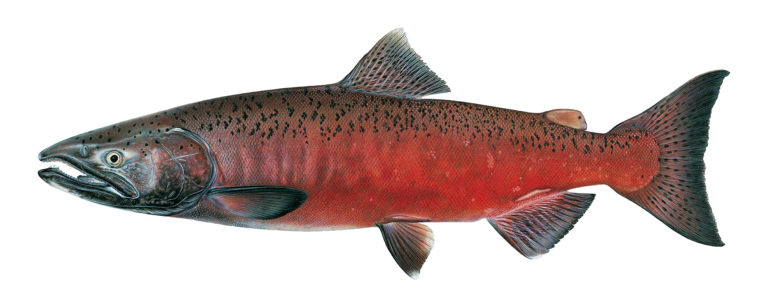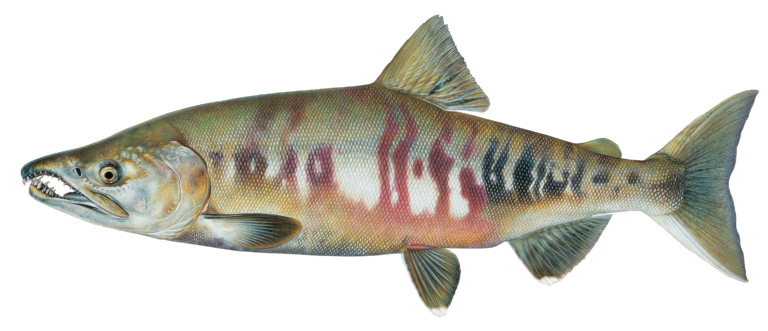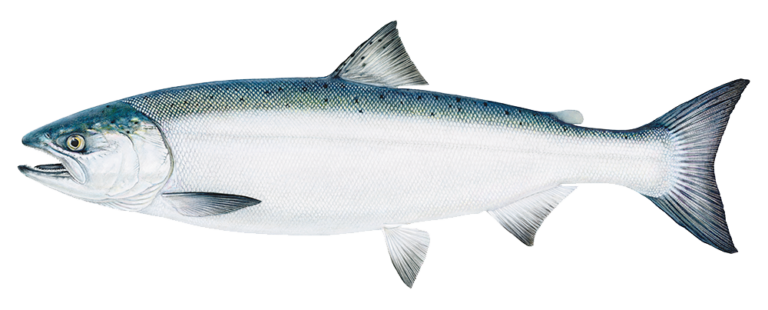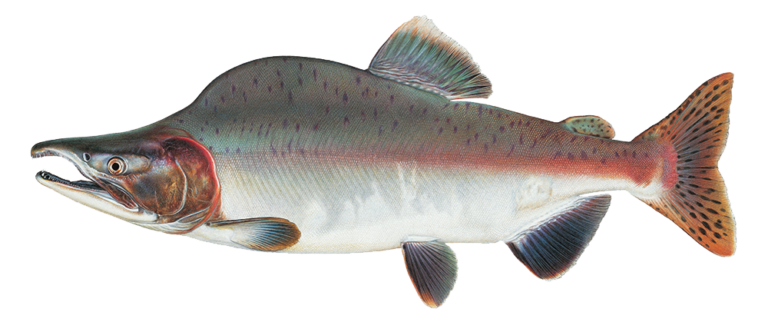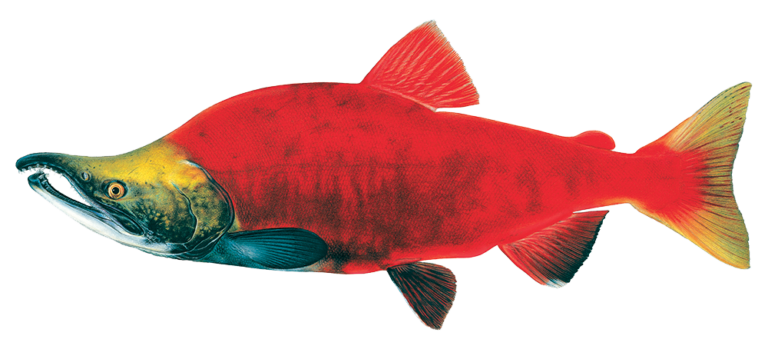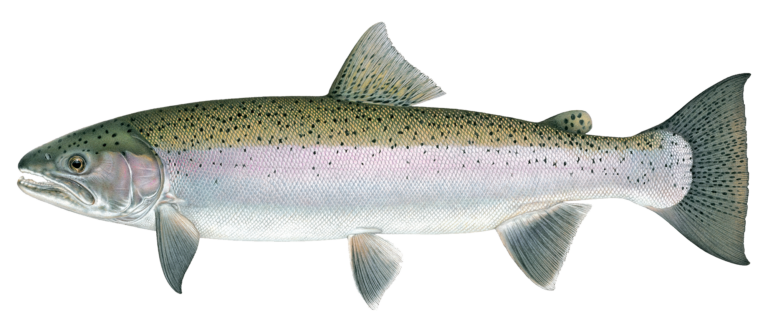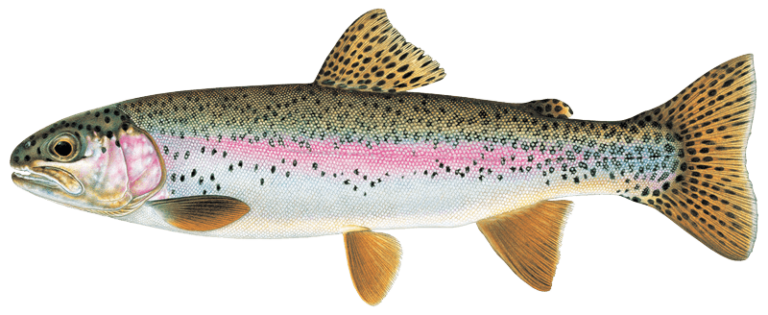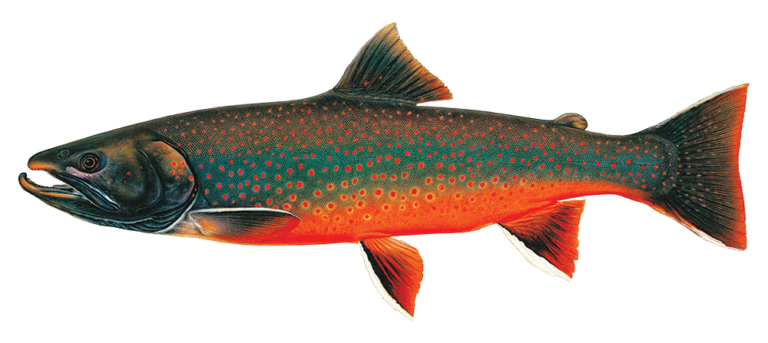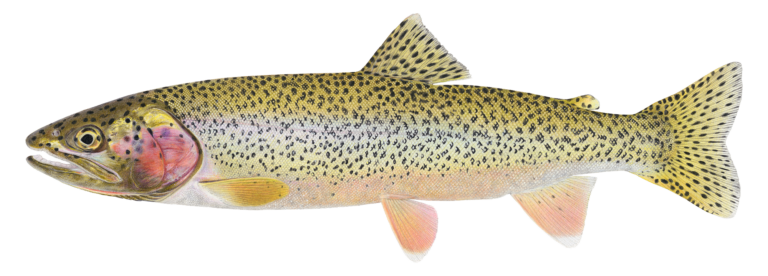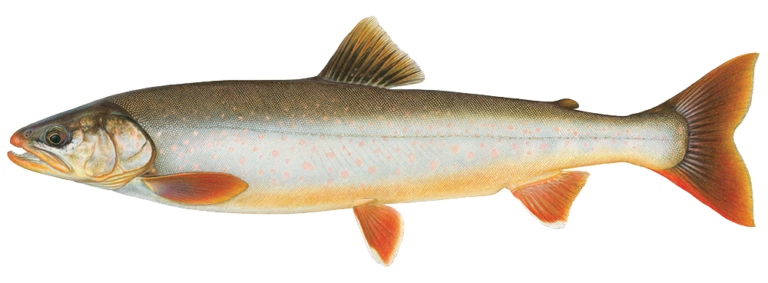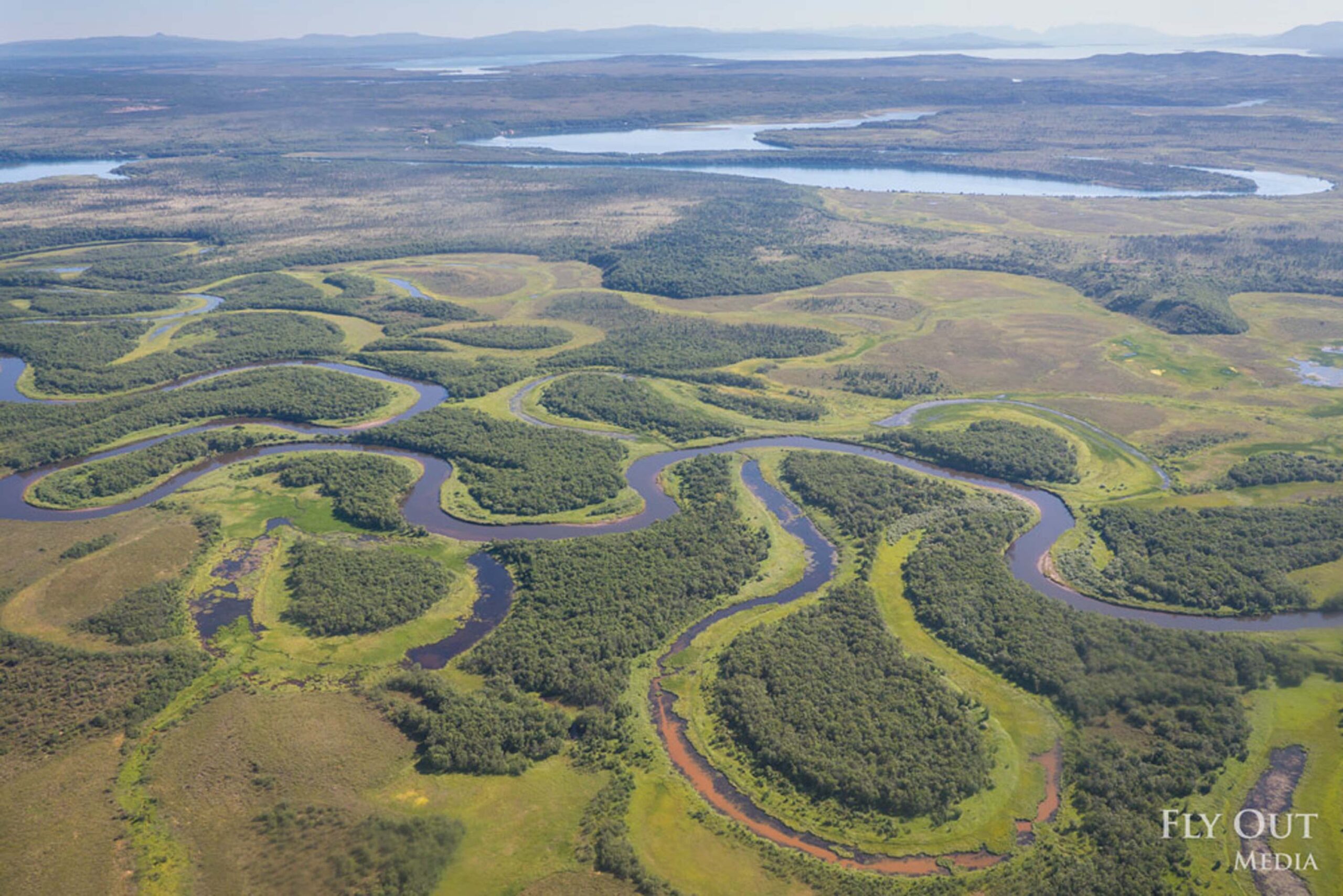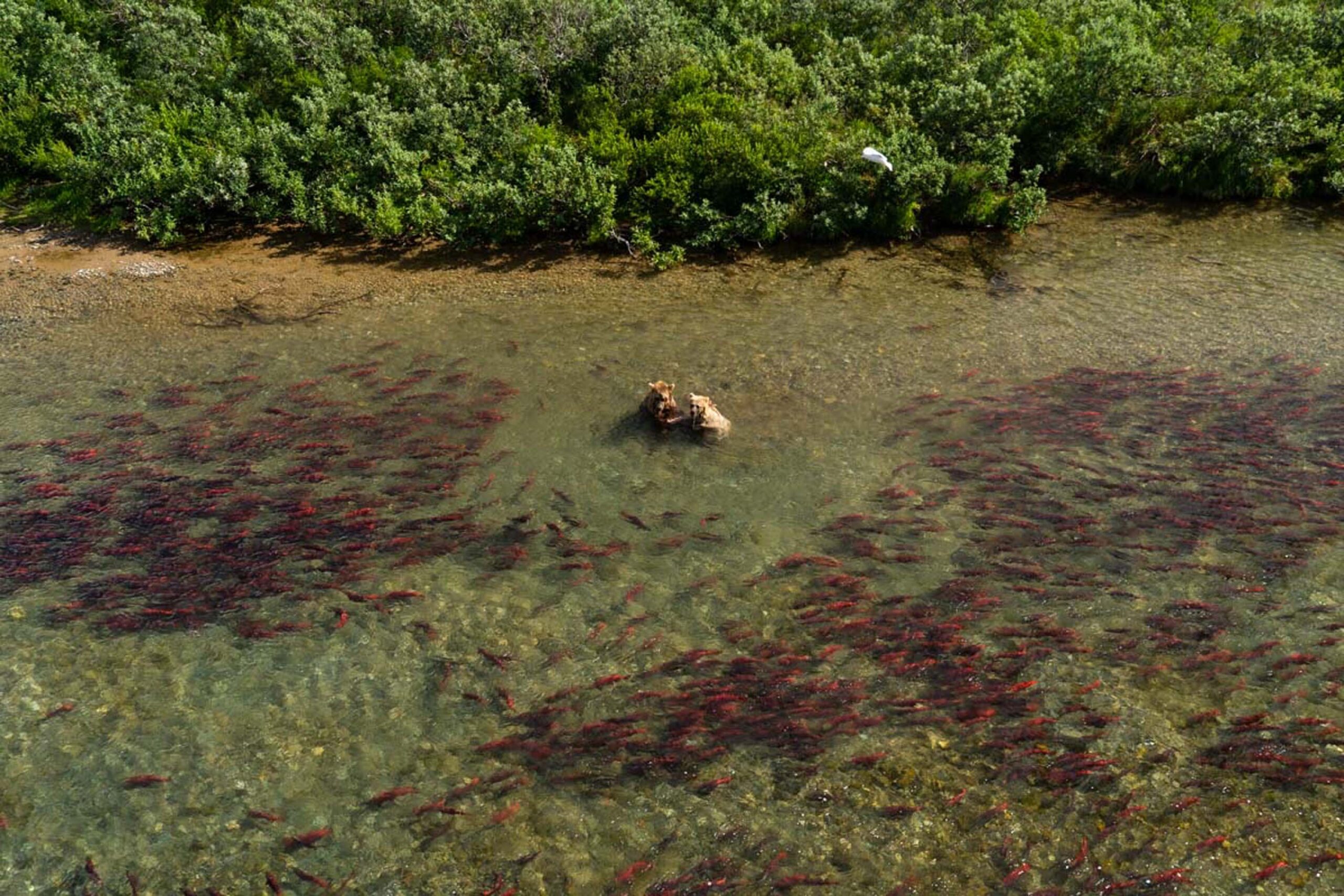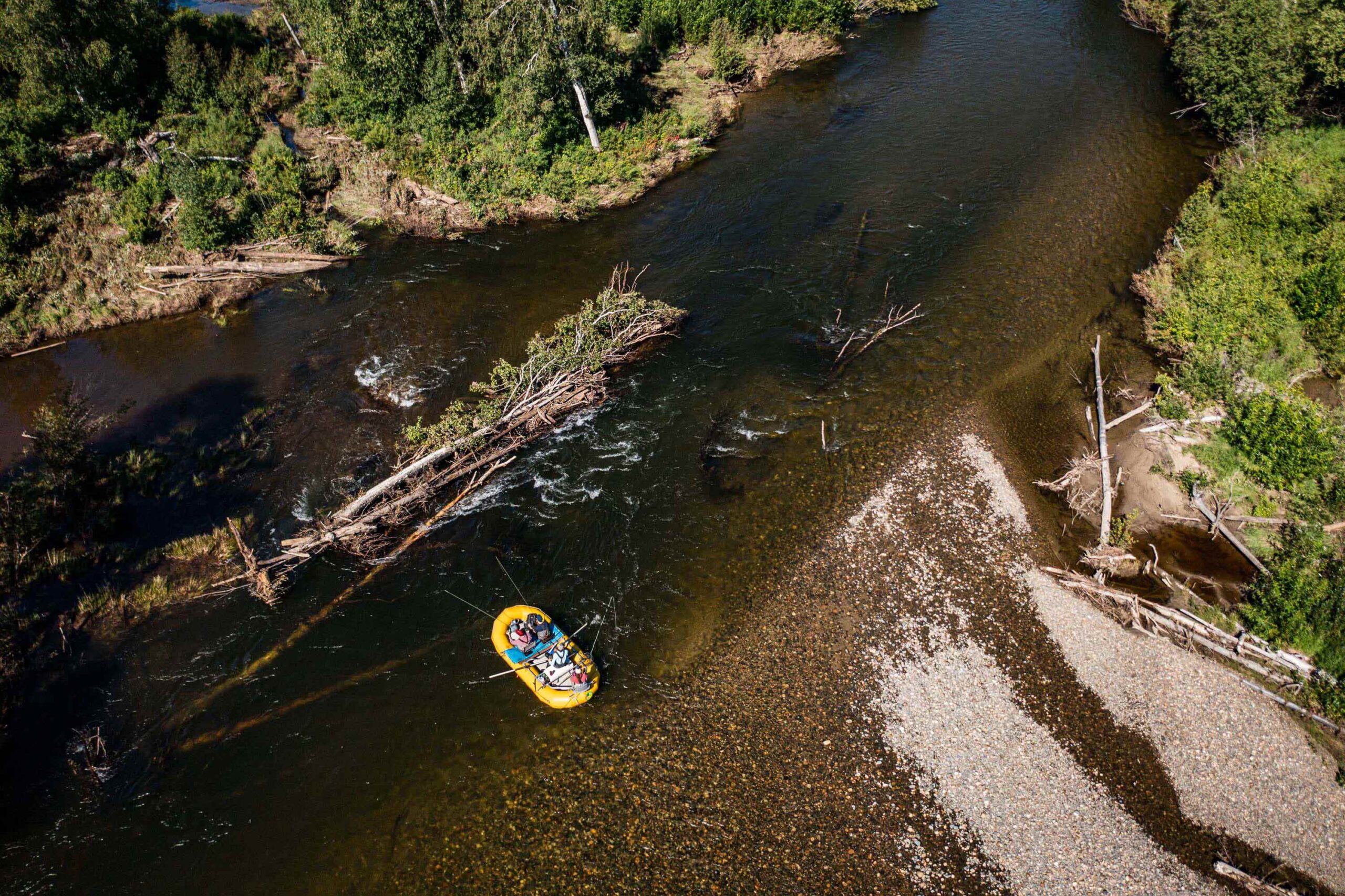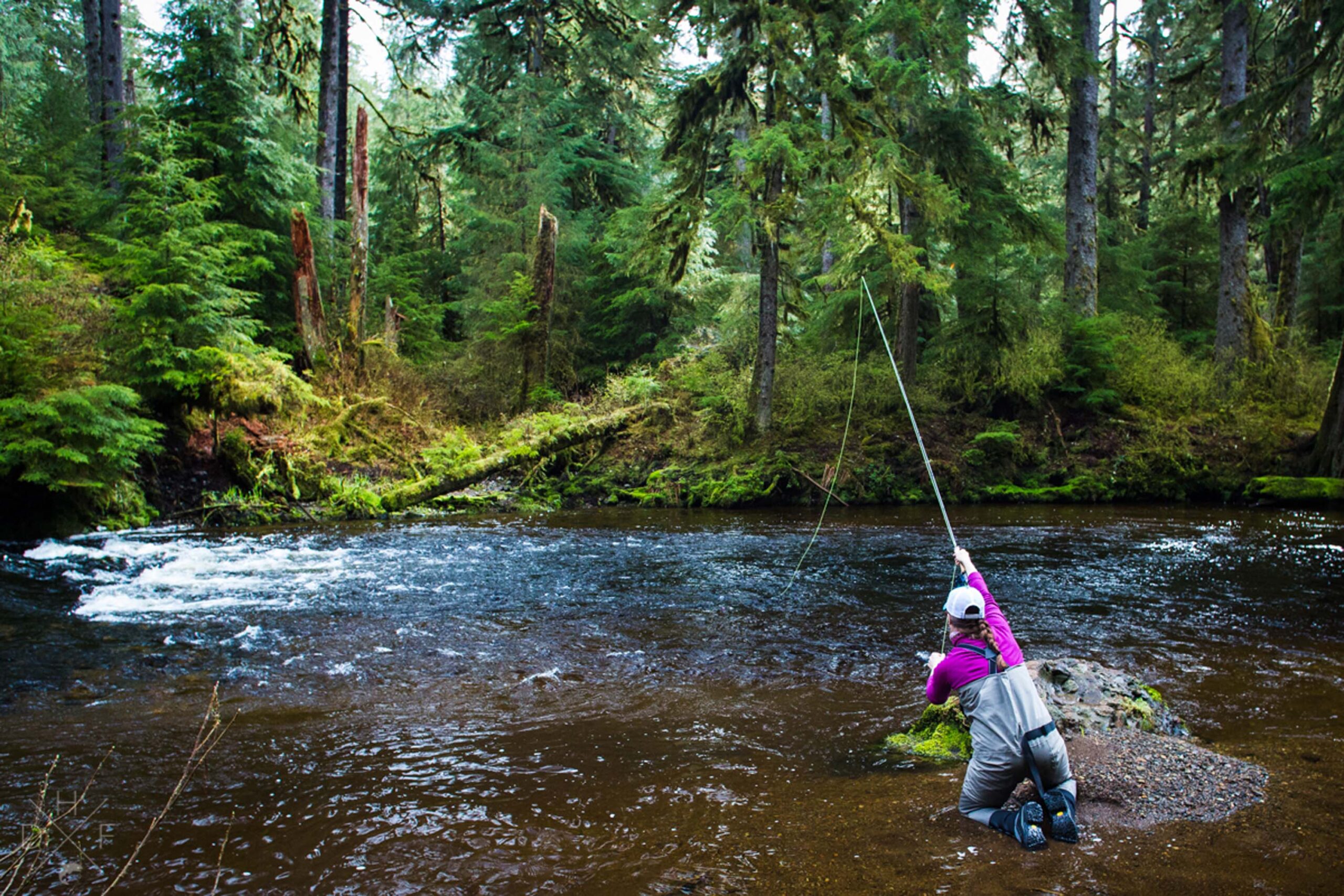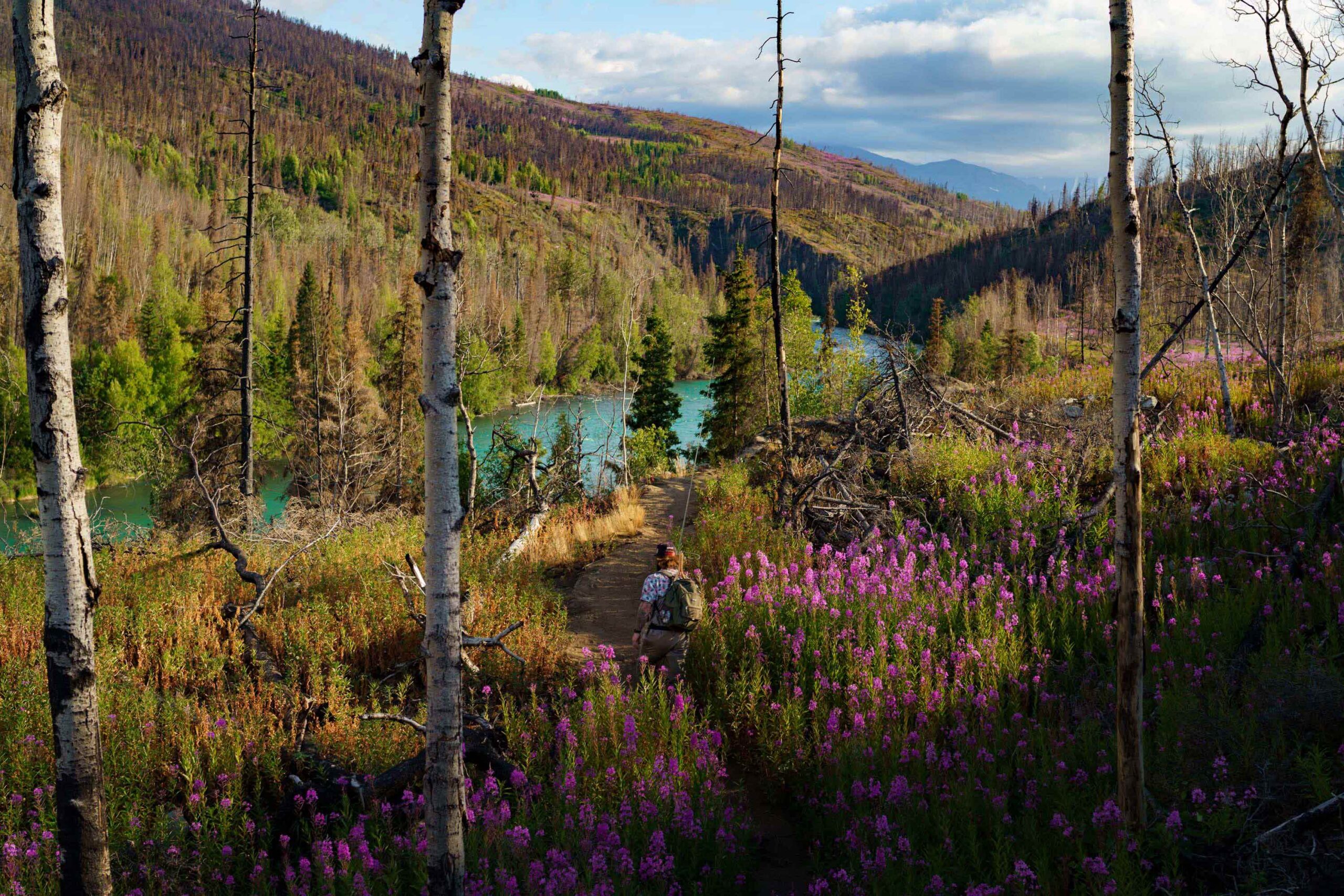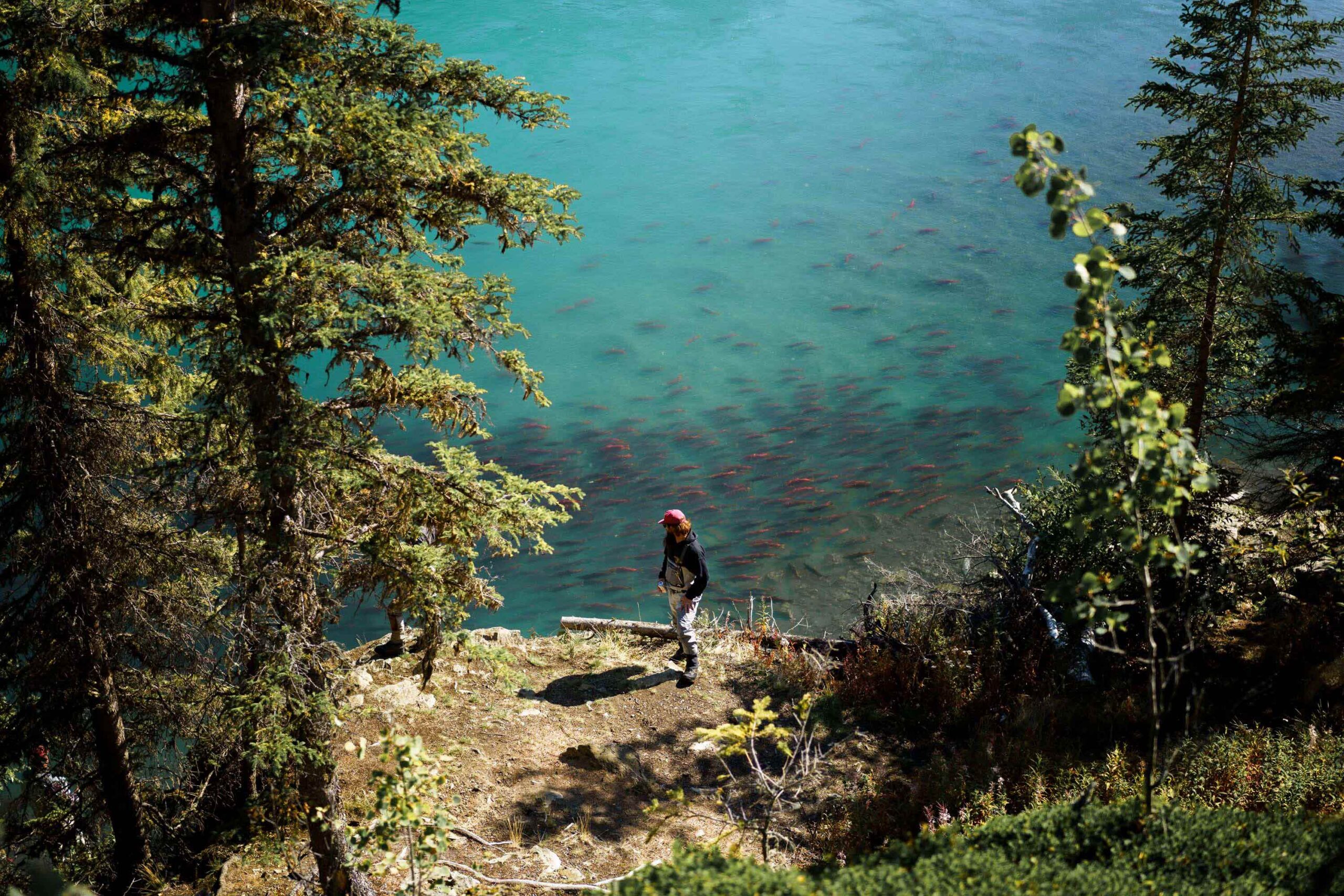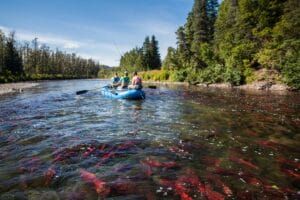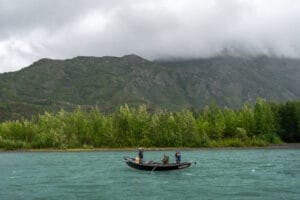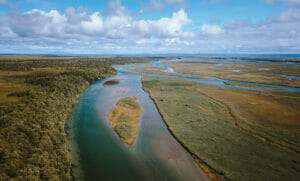Upwards of 80 million salmon return to Bristol Bay each year. (Flyout Media)
Alaska

Overview
Alaska is home to some of the most prized and spectacular rivers on the planet. The intact watersheds of Bristol Bay produce over half the world’s sockeye salmon. Roughly 15,000 miles of clean, undammed creeks and rivers flow through the temperate rainforest of the Tongass, providing optimal habitat for salmon and steelhead. Trophy rainbow trout rivers in southcentral and western Alaska draw anglers from around the world. Simply put, Alaska is the best of what’s left, and Trout Unlimited is dedicated to keeping it that way. Our ongoing advocacy efforts are instrumental in protecting these incredible places and securing safeguards for Alaska’s pristine rivers and wild landscapes. At the same time, we are working to identify and restore trout and salmon habitat degraded by mining, logging, and in some areas, rapid development.
Threats & Opportunities
Alaska’s ample intact habitats are threatened by projects that could compromise trout and salmon habitat and put at risk sustainable fishing and tourism industries and the subsistence lifestyles that are pervasive across much of the state. TU is uniquely positioned to bring strong scientific review and public scrutiny to potentially damaging projects. By advocating for protecting critical fish habitat and advancing strategic restoration projects, we are working to keep Alaska’s salmon and trout populations thriving for generations to come.
How We Work
Advocacy
Alaska has the opportunity to get the wild fish story right. Protecting intact ecosystems across Alaska will ensure trout and salmon have a strong future in the 49th state.
Restoration
Although much of Alaska’s habitat remains intact, logging, mining, road building, and other forms of development have degraded and disconnected habitat in many parts of the state. Restoration projects in the southeast, southcentral, and interior parts of Alaska are repairing important fish habitat and helping ensure fish have the diversity of habitat needed to maintain populations in a warming world.
Reconnection
Across Alaska, thousands of failing culverts impede migration and disconnect habitat. Culvert replacement projects in southeast and southcentral Alaska are reconnecting extensive habitats that are crucial to spawning and rearing fish.
Collaboration
Caring for fish is an all-in effort. We collaborate with a broad range of organizations and agencies to get things done. From state, federal, and local agencies, to Tribes, local communities, businesses, and other non-profits. Our Alaska Abandoned Mine Restoration Initiative is a partnership with Kinross Gold and is the first time a conservation organization and mining company have partnered together to restore fish habitat in the state of Alaska. We are also an active participant in a nationwide network of Fish Habitat Partnerships focused on conserving and restoring fish habitat in key areas.
Community Science
Our staff works closely with volunteers to expand Alaska’s Anadromous Waters Catalog by documenting previously unknown anadromous waters and species. By cataloging where fish live, we begin to develop strategies to better protect their instream habitat and preserve the clean water they need to thrive.
Angler Education
Alaska attracts anglers from around the world, many of whom experience its rivers through guides. Our guide ambassador programs in Bristol Bay and Kenai promote conservation, advocacy opportunities, and minimal-impact angling methods to a vast group of visiting and resident anglers.
Youth Education
The future of fish lies with the next generation. Our youth education programs reach children across the state, introducing them to the joys of fly fishing, along with the importance of habitat and caring for the resource. We are working to ensure Alaska’s future voters and decision-makers understand the importance of healthy fish habitats to our economy and way of life.
How You Can Help
Sign up to take action on behalf of Bristol Bay.
TAKE ACTIONStay up to date about how you can help us care for and recover Alaska’s Priority Waters.
Alaska Conservation Team
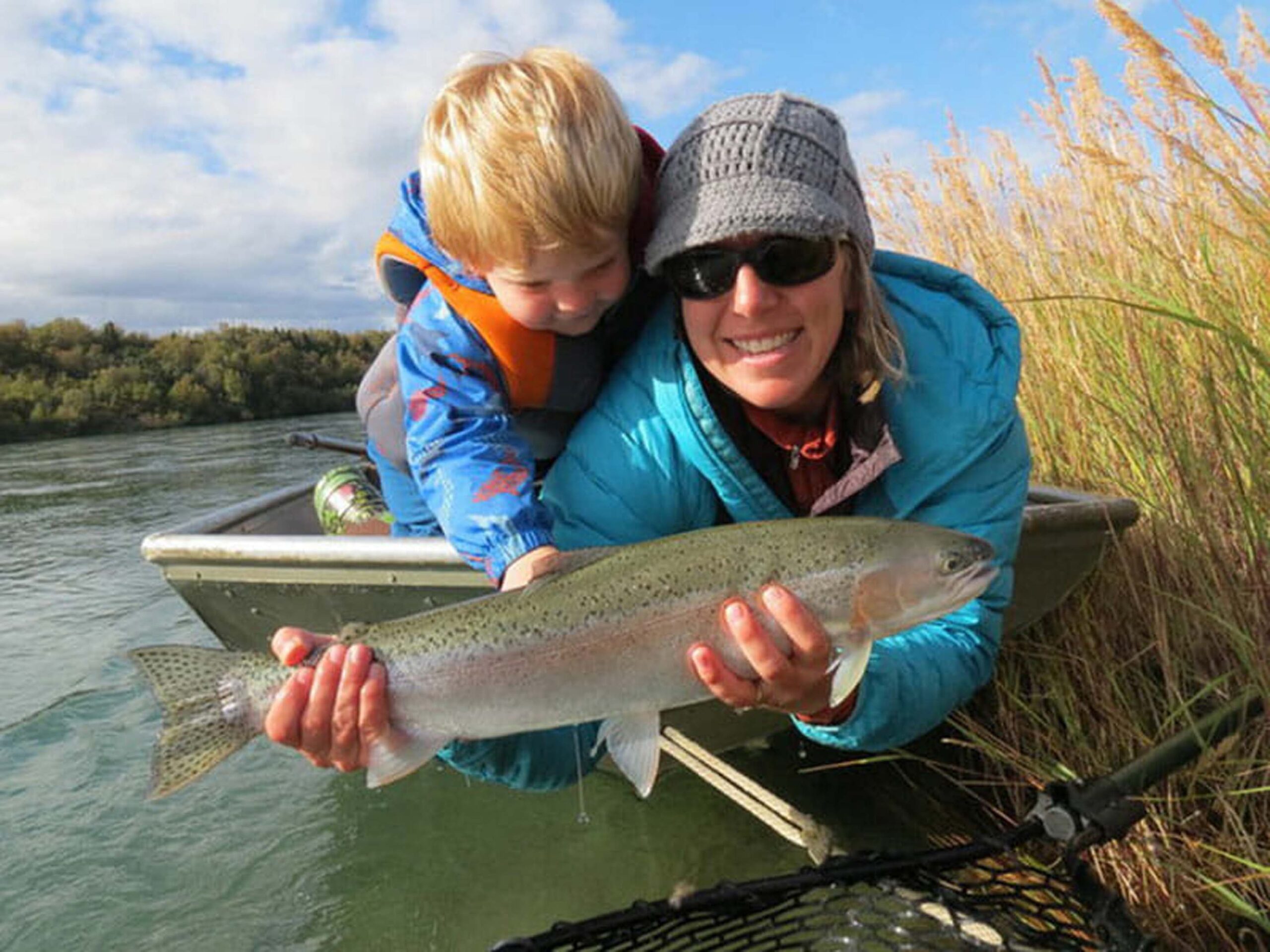
Nelli Williams
Alaska State Director
Alaska State Director
9.3
MILLION ROADLESS ACRES SAFEGUARDED
80+
MILLION WILD SALMON PROTECTED
Priority Waters
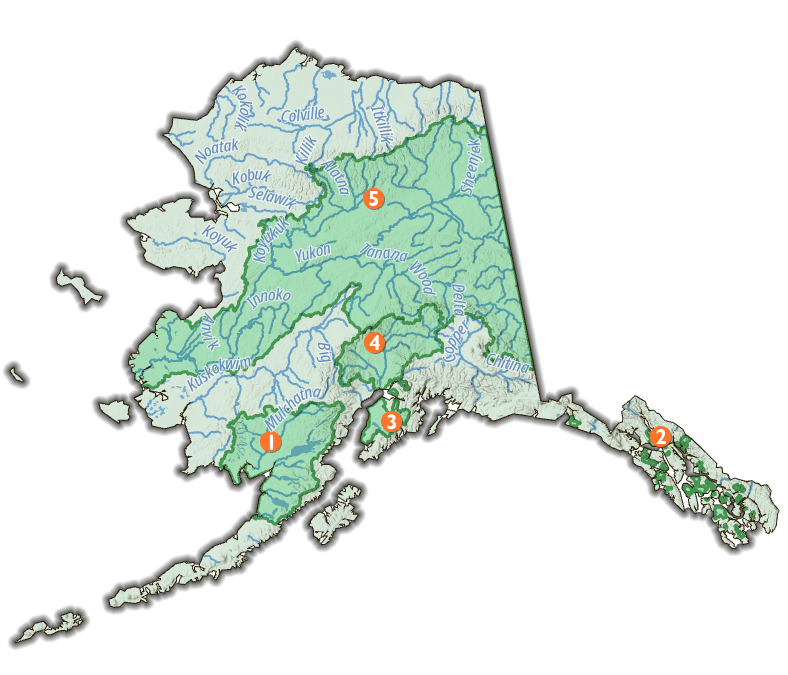
-
Bristol Bay
The world’s most productive wild salmon fishery has been under relentless threat from industrial-scale mining for almost twenty years. Bristol Bay salmon are a keystone species that supports the rich surrounding environment teeming with bears and trophy rainbow trout, underpins the subsistence lifestyles practiced by the region’s many Indigenous Tribes, and boosts a $2 billion recreational and commercial fishing economy. Although Clean Water Act protections for the headwaters of Bristol Bay have halted the proposed Pebble Mine, there is still work to be done to secure permanent safeguards that protect the entire watershed from industrial mining.
-
Tongass National Forest
Part of the world’s largest remaining intact temperate rainforest, the Tongass hosts abundant wild salmon and steelhead runs in its tree-lined rivers and streams. The forest also stores an immense amount of carbon and plays an important role in buffering the effects of climate change. We advocate for a logging-free future for the Tongass and we work to restore habitat that has been degraded and disconnected by logging and road building.
-
Kenai Peninsula
Trophy rainbow trout and strong salmon runs draw visiting and resident anglers to the Kenai River, Alaska’s most popular sportfishing destination. The river sees more than 400,000 angler days per year and more than 600,000 salmon are harvested. We are working to educate and engage anglers, especially youth, in better caring for fish and their habitat to ensure one of Alaska’s most productive rivers stays healthy and thriving. In 2020, we launched our first Alaska Abandoned Mine Restoration Initiative project on Resurrection Creek and are restoring 2.2 miles and 74 acres of riparian habitat important to Chinook salmon.
-
Anchorage and the Mat-Su Valley
Over half of Alaska’s population lives near these watersheds, and salmon populations here are some of the most threatened in the state. We are responding to emerging threats like the West Susitna Industrial Access Road, a 100+ mile road across more than 80 salmon streams. We are proud supporters of the MatSu Basin Salmon Habitat Partnership. Our major restoration effort on the Eklutna River is working to bring flows back to a river that has run dry for over 60 years and reestablish all five Pacific salmon species that traditionally supported the Native Village of Eklutna.
-
Yukon River
This is the third longest river in North America. Flowing from Canada and across Alaska before emptying into the Bering Sea, the river is an integral food source for local and Indigenous communities. The recent collapse of two Yukon River salmon fisheries has left widespread food insecurity in the region. Historical and ongoing mining from both small and large-scale operators have degraded habitat throughout the region. We are working with local and federal partners to identify, prioritize, protect and restore critical fish habitat, especially for Chinook salmon, in Yukon River tributaries.

